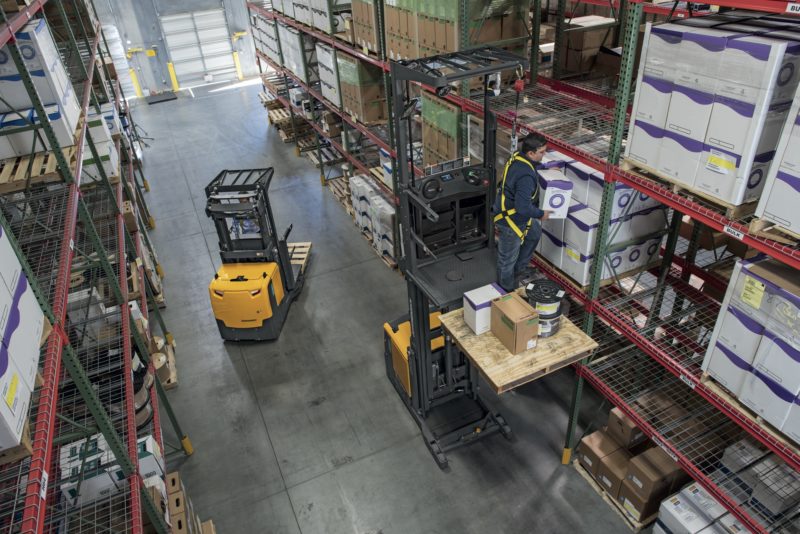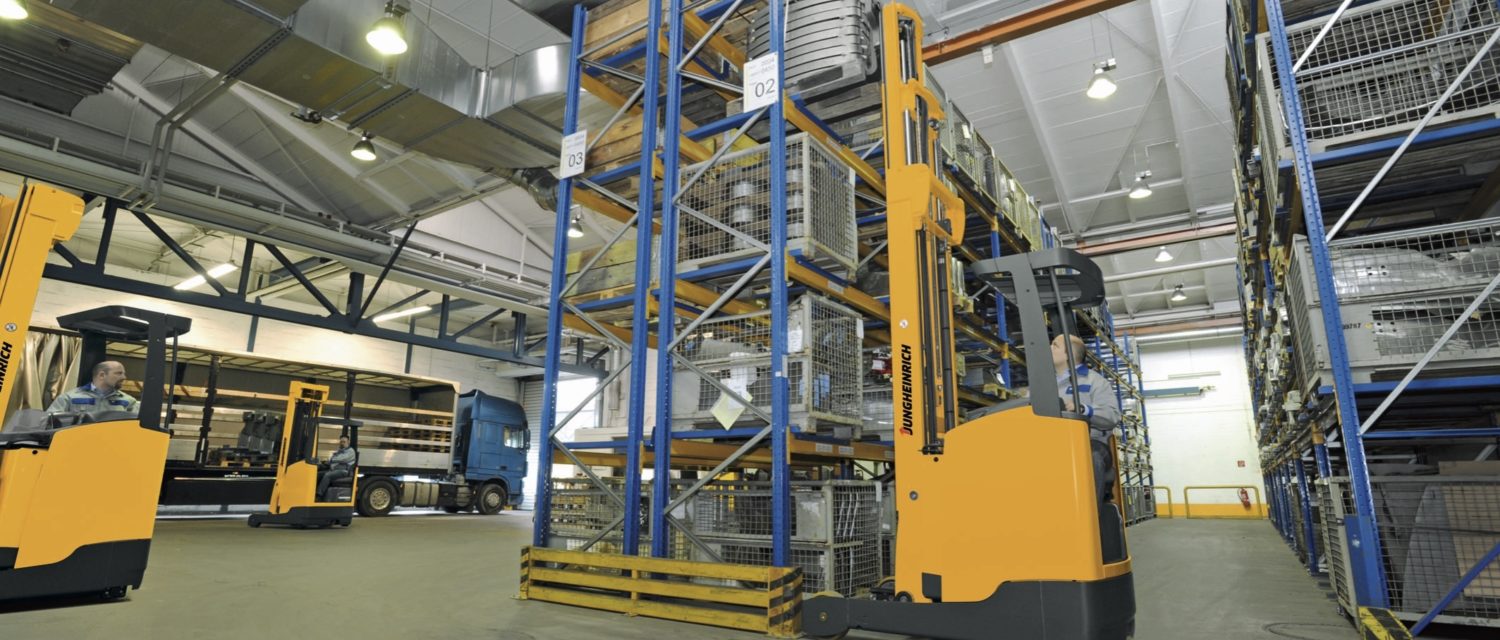Types and Uses of Order Pickers

One of the most basic tools in a warehouse is the order picker. This type of forklift truck allows employees to quickly pick orders from even the highest shelving in the warehouse. While extremely common, these trucks are not uniform. They come in several different types and with several different features. Understanding your options when it comes to them can help you choose the right tool to maximize your own warehouse’s picking productivity.
[CUTOFF]Picker Basics
At its most basic, an order picker is a type of lift truck that contains a mast upon which an individual can stand. The mast then moves up and down to give the picker access to any of the shelves in the warehouse. Most pickers have a weight limit of 3,000 pounds.
Order pickers of all kinds, as their name implies, are lift trucks used to improve the productivity and efficiency of order picking within a warehouse. In particular, these lift trucks are used to select individual items from the shelves rather than entire crates.
For example, a warehouse might use one to select individual items from a crate in order to fulfill an order, rather than selecting an entire pallet for transport to or from the warehouse. They may be used, for example, to select one package of napkins rather than an entire case of napkins to fulfill an individual order for a household rather than a commercial order for a restaurant.
Order Picker Features
While all order pickers operate in essentially the same way, they do have differences that affect how they perform and in what environments they perform best. Consider these features that you can get with these lift trucks:
Height
Not every picker will reach the same height. Some, called mid-level pickers, are designed to help you reach between 15 and 25 feet high. Others, called high-level pickers, can reach between 20 and 35 feet high.
When choosing a picker for your warehouse, select the one that allows your pickers to reach the highest shelves in your warehouse. For example, if you only have 15-foot ceilings, you only need a mid-level picker. If, however, your industrial shelving racks stack products up to 26 or 30 feet high, you will need a high-level picker.
Guidance System
These lifts trucks also vary in how they are guided. For example, some pickers are guided manually by the employee. Typically, mid-level pickers are manually driven.
Other pickers, however, are wire guided or rail guided. This means that rails or wires embedded into the warehouse floor guide the direction of the picker’s travel. Typically, these guidance systems are used with high-level pickers.
Rail guidance and wire guidance systems allow for narrower aisles. They allow a picker to operate in aisles as narrow as 54 inches. In addition, these guidance systems reduce collisions with, and damage to, the shelving. These automated guidance systems also allow the operator to focus more on the order picking and less on the driving so they can pick more accurately and more productively.
Additional Accessories
Besides their height and guidance system, an order picker can have a variety of other accessories attached to it. For example, it can have an additional mast in front that can be moved up and down or it can have stationery forks attached to the front.
Other accessories you may find on one of these pickers include the following:
● A cart attached to the front
● A variety of platforms
● Auto locking pallet clamp
● Automatic steering control (with rail guided systems)
● Load-facing operator controls
● Retractable tether
Most of these accessories are not necessary for the successful operation of the order picker. However, they can improve the safety or function of the picker, depending upon your warehouse setup and needs.
Order Picker: Selection Tips
When it comes time to choose a picker, you may wonder which is the best one to select. Since they come with different features and abilities, not every order picker is right for every business.
When choosing an order picker, consider the following factors.
Picking Needs
As mentioned above, pickers are intended for use when picking individual items, rather than when picking crates, pallets, or larger items. As a result, you only need to consider purchasing a picker if you have these types of items to use in order fulfillment. If you mostly move large pallets and crates, you will require a different type of forklift or lift truck to help you successfully move the items you require.
Height Needs
The height that employees need to reach to successfully pick orders should also be taken into consideration. For example, if your shelving units do not go beyond 20 or 25 feet, you may only need a mid-level picker. Shelving that goes higher, however, will require a high-level picker.
Choosing a picker that provides you with the right height for your needs prevents you from spending money on more capacity than you need, while ensuring that your employees can easily reach the products they require to fulfill customer orders.
Safety Features
Safety is always paramount when picking orders. You want to make sure that your employees can accurately pick orders without accident.
Keeping your employees safe may require you to add features like floor mats that allow operators to enjoy greater grip on the floor of the picker, or automatic steering control. An experienced dealer can help you understand your safety options and choose the ones that work best for your business.
An order picker can help your employees pick more accurately and productively. Choose the picker that has the right features for your needs, and don’t forget to reach out to Darr Equipment if you need help. We have a wide selection of machines, as well as the experience required to guide you toward the choice that is best for you.
